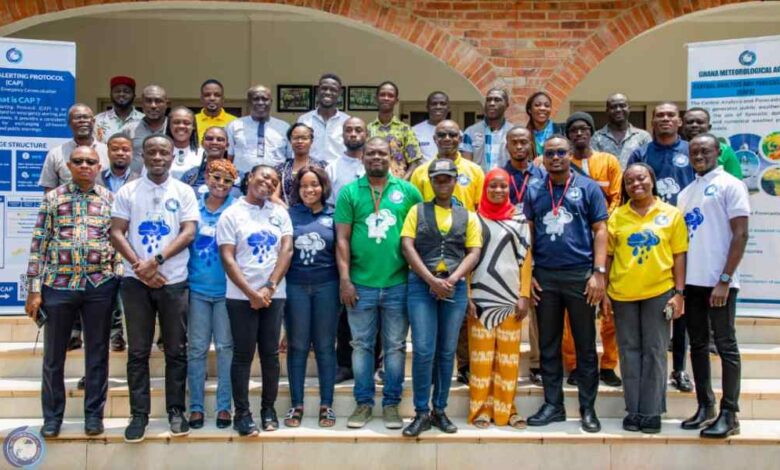Meteorological Agency targets 2027 for life-saving weather Alerts

The Ghana Meteorological Agency (GMet) is set to roll out life-saving early warning systems by the end of 2027, aimed at ensuring that every citizen is adequately protected from hazardous weather, water, and climate-related events.
This was announced by Mr. Joshua Asamoah, a Senior Meteorologist at the Central Analysis and Forecasting Office (CAFO), during a media engagement in Accra.
Speaking to Hajia Asana Gordon of MyNewsGh shortly after a workshop on early warning systems, Mr. Asamoah highlighted that about 60% of Africa’s population currently lacks access to such systems, describing the situation as a major challenge for disaster preparedness across the continent.
He urged governments, institutions, and individuals to make weather considerations an integral part of their planning to reduce the devastating impacts of climate-related disasters.
The workshop, themed “Advancing Early Warning Systems for All Media as a Lifeline,” brought together journalists, radio show hosts, producers, news editors, and management of the Ghana Meteorological Agency.
Participants were trained on how to interpret, communicate, and disseminate weather forecasts more effectively to the public.
Mr. Asamoah emphasized that the media plays a critical role in building public trust in weather warnings and, through effective communication, can help save lives and protect livelihoods.
According to Mr. Asamoah, about 35% of disasters across Africa are linked to weather, climate, and water events.
He noted that Ghana is working to strengthen its capacity, improve public awareness, and develop systems that enhance resilience against climate-related risks.
“Early warning saves lives and livelihoods, and the ability to gather and communicate warnings has greatly improved through mobile communication,” he stated.
In her remarks, the Head of CAFO, Madam Felicity Ahafianyo, cautioned operators of light aircraft to exercise extreme care, particularly by avoiding flying through deep convection clouds, which are associated with severe turbulence and lightning, especially in the afternoons.
She further advised motorists to remain vigilant and watch out for fallen trees and other obstacles on roads during and after storms.




